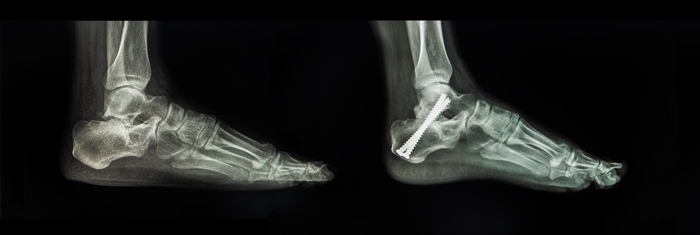Fusion of Joints Surgery in Alwarpet, Chennai
Arthroscopy is a branch of orthopedics that assists in diagnosing and providing suitable treatment for bone and joint-related injuries. The process is conducted by making a small incision in the concerned region and inserting a narrow tube attached with an optic-fiber camera inside the body. The camera will then produce a high-definition image of the source of pain and damaged tissues to make an informed decision on directing the surgical procedures like arthrodesis, ligament reconstruction, knee arthroplasty, etc.

What is Arthrodesis?
Just like the skin, human bones tend to repair themselves. Although, in certain instances, when the repair does not happen on its own, your orthopedic surgeon will artificially join two bones by a process called Arthrodesis or fusion of joints. It is a clinical procedure that helps in the ossification of joints by manual intervention. The surgery is done for patients suffering from a joint fracture, arthritis, or similar such conditions.
Who Qualifies for Fusion of Joints?
Patients with a history of joint pain that remains untreatable with traditional treatments should undergo this treatment. Besides that, some other reasons for conducting arthrodesis surgery are:
- Joint degeneration due to infection, metabolic disease, old age, or progressive osteoarthritis.
- Persistent pressure and recurring sprain in joints.
- Genetic disorders such as neurofibromatosis, Gaucher’s disease, and alkaptonuria affect certain joints.
- Orthopedic congenital disabilities.
- A historic fracture that didn’t recover completely.
Request an appointment at Apollo Spectra Hospitals, Alwarpet, Chennai
Call 1860 500 2244 to book an appointment.
Why Is Fusion of Joints Conducted?
Arthrodesis surgery is conducted as a last resort when traditional treatments don’t show any signs of improvement. In addition, patients who have progressive arthritis conditions that cause joint degeneration must consider this a possible cure. If left untreated, it can cause deformity in body parts, mainly arms, fingers, and knees.
Furthermore, in some individuals, scoliosis - a disorder causing curves in the spine, can cause damage to the spine and eventually affect the nervous system. Therefore, while it is a probable treatment, it is advisable to take utmost precautions before considering surgery in this case.
As a result of this surgery, the movement of joints will be restricted, and you must consult with your surgeon in advance.
Different Types of Arthrodesis
The type of surgery will depend on your requirement and the joint to be treated. Some of the most commonly performed procedures include:
- Bone Graft - In this method, your orthopaedist will fabricate a graft or piece of tissue using bones from different sources.
- Autograft - When the surgeon uses bones from your own body to make the graft.
- Allograft - When the surgeon creates a graft using the donor's bones.
- Synthetic bone substitutes - These are commercially available products in granular form. They are made of bone-soluble material and mimic the structure of bone grafts.
- Metal implants - Commonly used implants are made of stainless steel, cobalt-based alloys, and titanium. They provide improved stability in the joints.
In some cases, the doctor can use either of these processes to join the bones successfully.
Benefit of Arthrodesis
Arthrodesis is a considerably safe and outpatient (relieved on the same day) surgery with a high success rate. While the downside is a restriction in joints, some of the benefits of the surgery are:
- Relief from pain
- Provides joint stability
- Improves body alignment
- Better weight-bearing capacity
Associated Risks or Complications of Fusion of Joints
With advanced surgical techniques, arthrodesis is a commonly performed surgery with rare cases of complications. While it also depends on the individual’s overall health, some of the possible complications include:
- Infection at the surgery site
- Failure of the metal implant
- Blood loss
- Damage to adjacent nerves
No, the purpose of surgery is to reduce the pain you are experiencing due to deformity in the bone or subsequent joint. Therefore, the procedure will be performed with minimum invasion, and the doctor will administer local anesthesia to ensure a pain-free experience.
Recovery depends on your primary health condition and can take anywhere between six to twelve weeks. It also depends on the joint and the pressure exerted on it during healing. Therefore, the doctor will advise you to rest and restrict the movement for a few weeks.
There is a possibility that you will require another surgery if the implants undergo damage or you continue to experience pain in the region.
Symptoms
Our Top Specialities
NOTICE BOARD
CONTACT US
CONTACT US
 Book Appointment
Book Appointment


.svg)
.svg)
.svg)
.svg)








